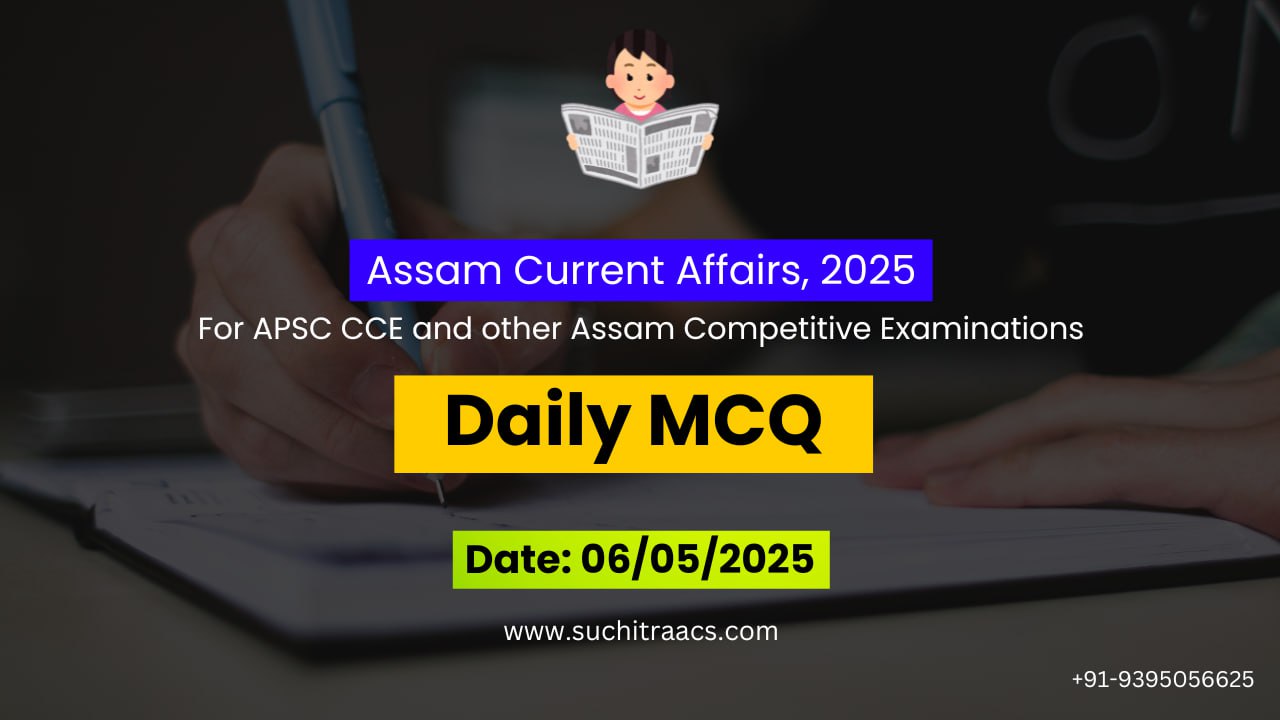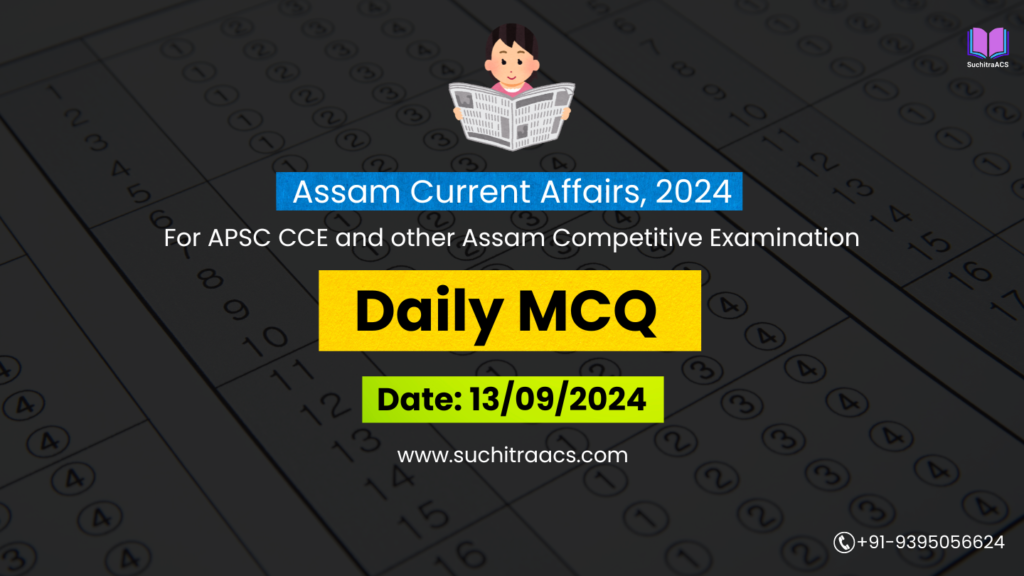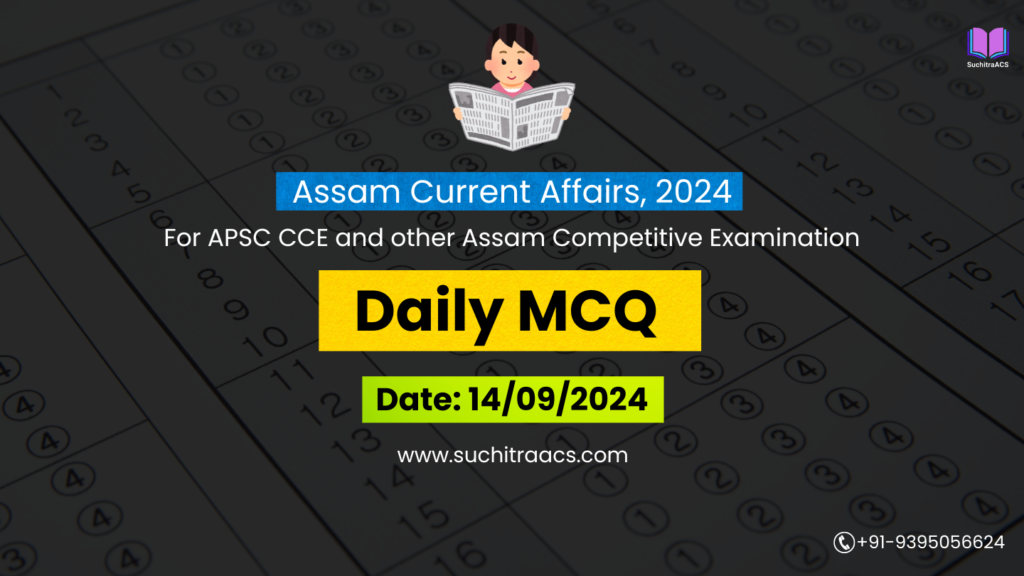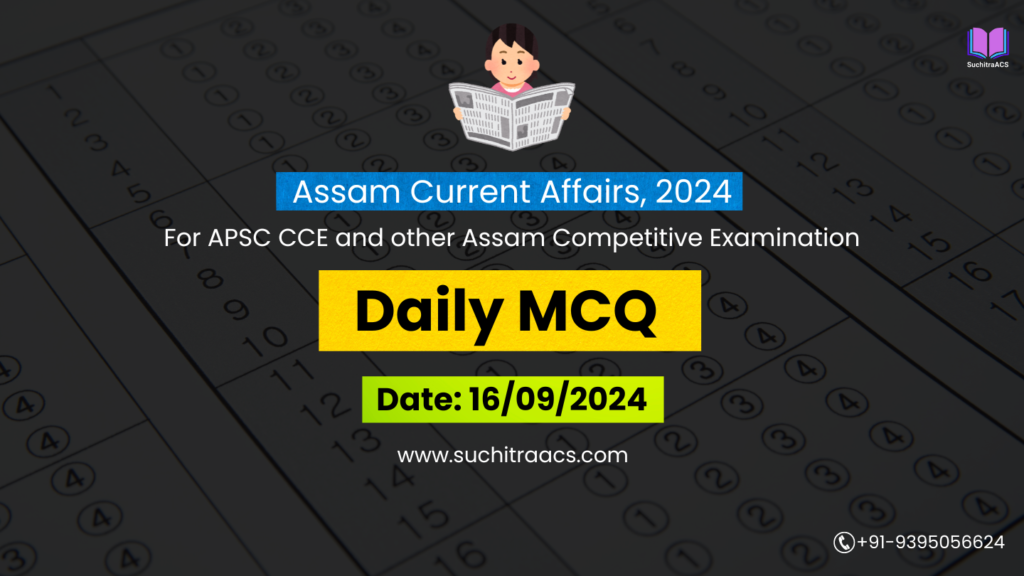APSC MCQs / APSC Prelims Practice Questions based on Assam Tribune (Daily) – 06/05/2025
For APSC CCE and other Assam Competitive examinations aspirants, practicing Daily MCQs is vital. This blog covers most important Prelims questions from the Assam Tribune today (06-05-2025). These issues are key for both APSC Prelims syllabus, offering insights into the important topics of current affairs.
✨ Current Affairs Crash Course for the APSC Prelims 2025

APSC MCQs / APSC Prelims Practice Questions (Date: 06/05/2025)
❶ Manipur Violence & Humanitarian Crisis
Q1. With reference to humanitarian interventions during internal conflicts in India, consider the following statements:
- The Indian Constitution empowers the National Human Rights Commission (NHRC) to intervene in any state-level human rights crisis without the state’s consent.
- Internally Displaced Persons (IDPs) in India are legally recognized under the Refugee Convention, 1951.
- The Manipur ethnic conflict has led to increased IDPs in neighboring states like Mizoram and Assam.
Which of the above statements is/are correct?
A. 1 and 2 only
B. 2 and 3 only
C. 3 only ✅
D. 1, 2 and 3
Explanation:
- Statement 1 is incorrect: NHRC requires state cooperation; its role is recommendatory and not enforceable without consent in state matters.
- Statement 2 is incorrect: India is not a signatory to the 1951 Refugee Convention, and IDPs do not enjoy separate legal recognition under national refugee law.
- Statement 3 is correct: Manipur conflict has led to displacement into nearby northeastern states.
❷ AFSPA Extension in Nagaland
Q2. Consider the following statements regarding the Armed Forces (Special Powers) Act (AFSPA), 1958:
- It empowers security forces to arrest without warrant and use force in ‘disturbed areas’.
- A state government has the exclusive power to declare an area as ‘disturbed’ under AFSPA.
- The Act was originally enacted to deal with insurgency in the Kashmir Valley.
Which of the statements is/are correct?
A. 1 only ✅
B. 1 and 2 only
C. 1 and 3 only
D. 1, 2 and 3
Explanation:
- Statement 1 is correct: AFSPA gives security forces sweeping powers in notified areas.
- Statement 2 is incorrect: Both the central and state governments can declare a region as ‘disturbed’.
- Statement 3 is incorrect: The Act originated in 1958 for the Northeast, not Kashmir (J&K was included later in 1990).
❸ Assam Police Project AAGHAAZ
Q3. Recently launched in Assam, the ‘Project AAGHAAZ’ is aimed at:
A. Improving counter-insurgency capabilities of Assam Police
B. Integrating Artificial Intelligence in crime prediction
C. Rehabilitating and reintegrating surrendered militants ✅
D. Promoting inter-state police cooperation in the Northeast
Explanation:
- Project AAGHAAZ is a rehabilitation initiative focusing on the mainstreaming of former insurgents, by providing skill development and economic integration.
Q4. Which of the following components are essential in successful de-radicalization and rehabilitation programs like ‘AAGHAAZ’?
- Vocational training and skill development
- Community sensitization
- Political representation of former insurgents
- Surveillance-based reintegration
A. 1 and 2 only ✅
B. 1, 2 and 3
C. 1, 2, and 4
D. All of the above
Explanation:
- While 1 and 2 are core to reintegration, 3 and 4 are not always applicable or recommended universally in such programs.
❹ Environmental Issues in Guwahati (Flash Floods)
Q5. Deepor Beel, frequently mentioned in relation to Guwahati floods, is:
A. A glacial lake located in Arunachal Pradesh
B. A Ramsar wetland site suffering from urban encroachment ✅
C. An artificial reservoir created for flood control
D. A seasonal river prone to flash floods
Explanation:
- Deepor Beel is a permanent freshwater lake and Ramsar site in Assam. It’s under stress due to rapid urbanization and garbage dumping.
Q6. Consider the following factors contributing to urban floods in Indian cities:
- Shrinkage of wetlands
- Climate-induced heavy rainfall
- Poorly planned urban infrastructure
- Availability of sponge cities
Which of the above contribute to increased flood risk?
A. 1, 2 and 3 only ✅
B. 1, 2 and 4
C. 2, 3 and 4
D. All of the above
Explanation:
Sponge cities (like in China) reduce flood risk by absorbing rainwater — they are not a contributing factor to floods, unlike the first three.
 APSC Prelims Crash Course, 2025
APSC Prelims Crash Course, 2025
at most affordable rate in Assam!

🔔 Join Our WhatsApp Study Group!
For exclusive access to premium quality content, including study materials, current affairs, MCQs, and model answers for APSC CCE and other Assam competitive exams.
Click here to join: SuchitraACS Study WhatsApp Group
📚 Want to know more about SuchitraACS’s most affordable courses?
Click here to know more: SuchitraACS Courses for APSC CCE and Assam Competitive Examinations




